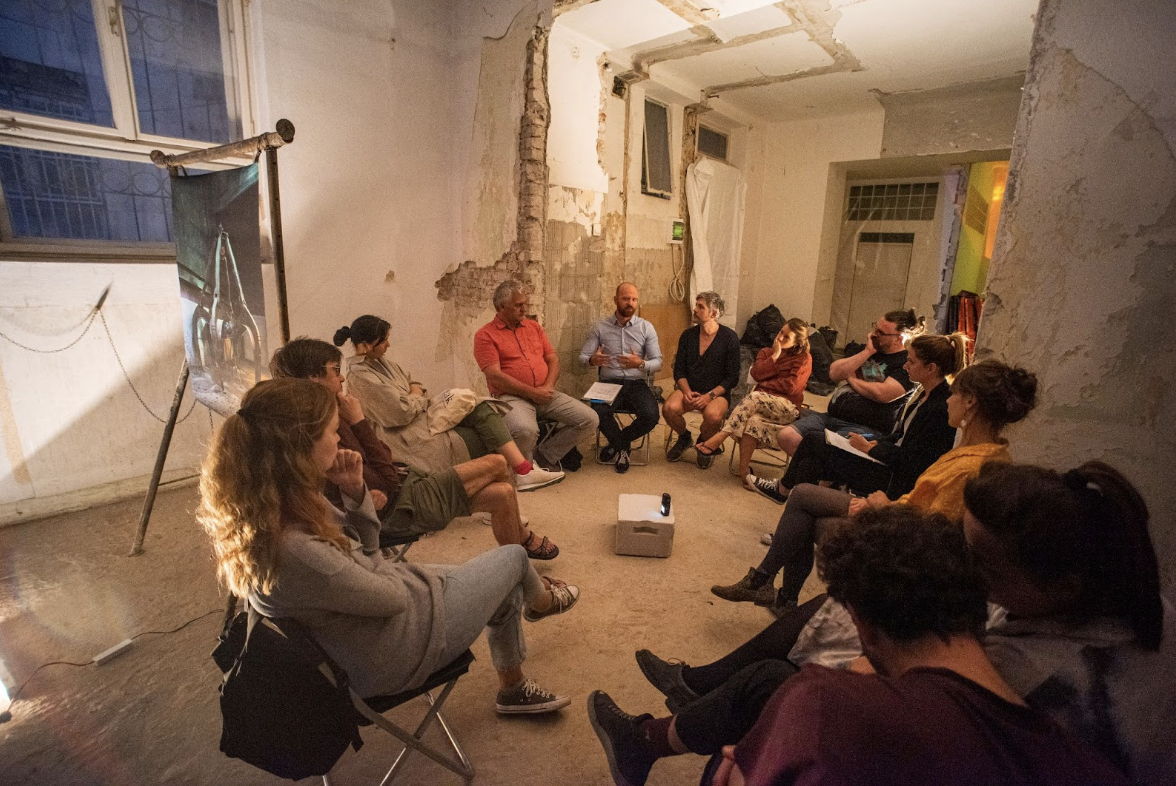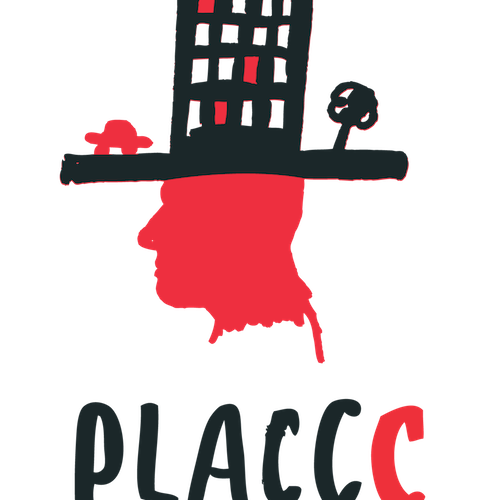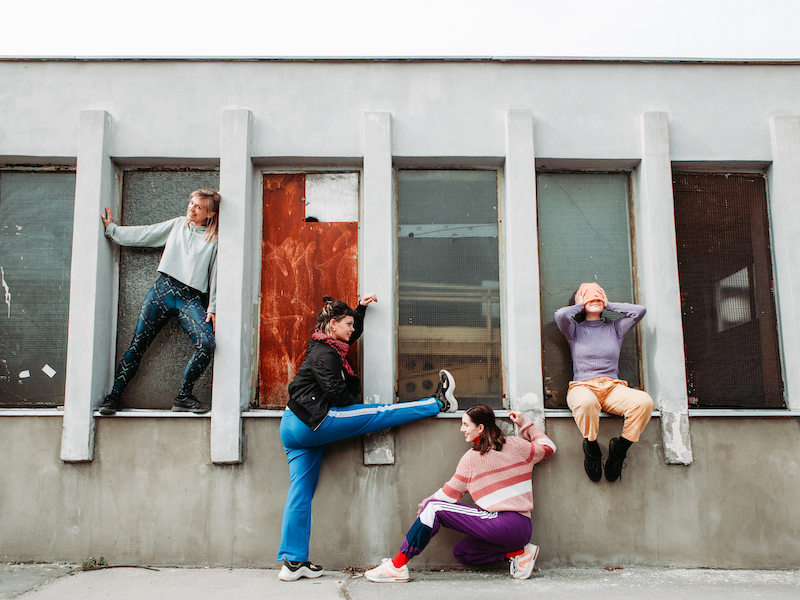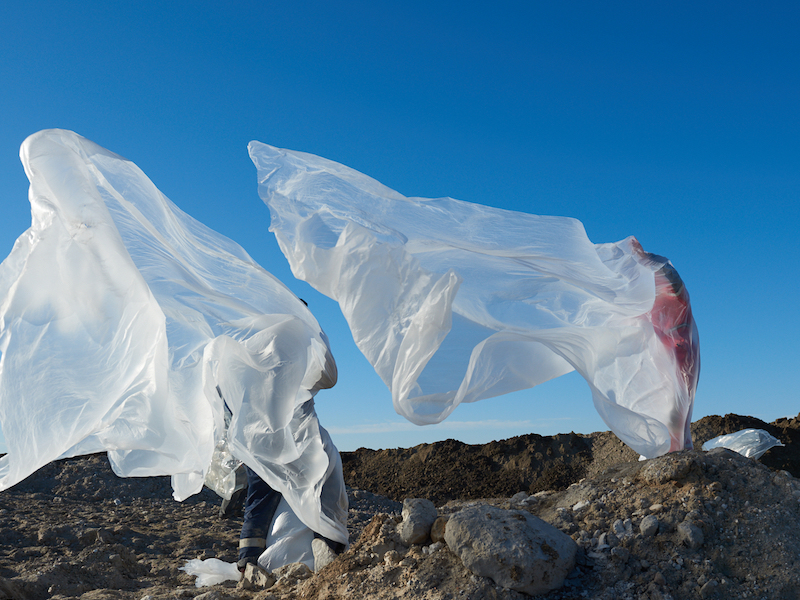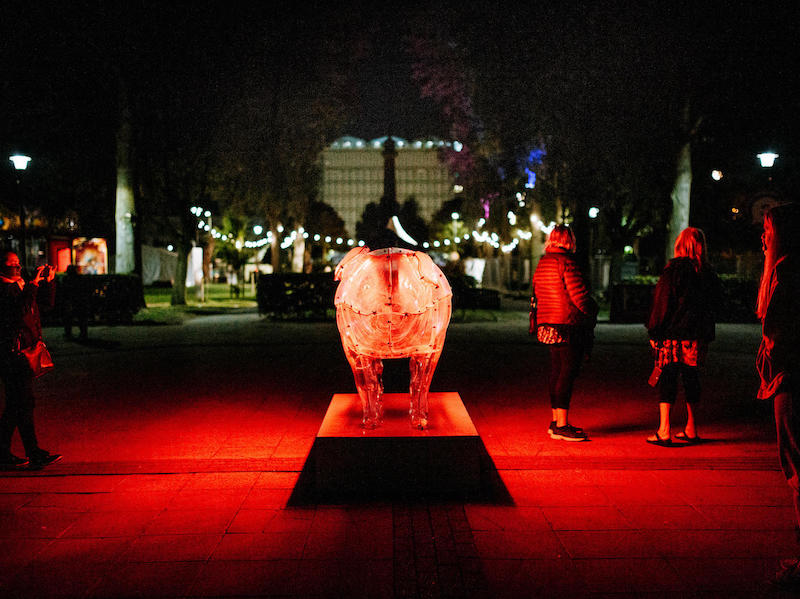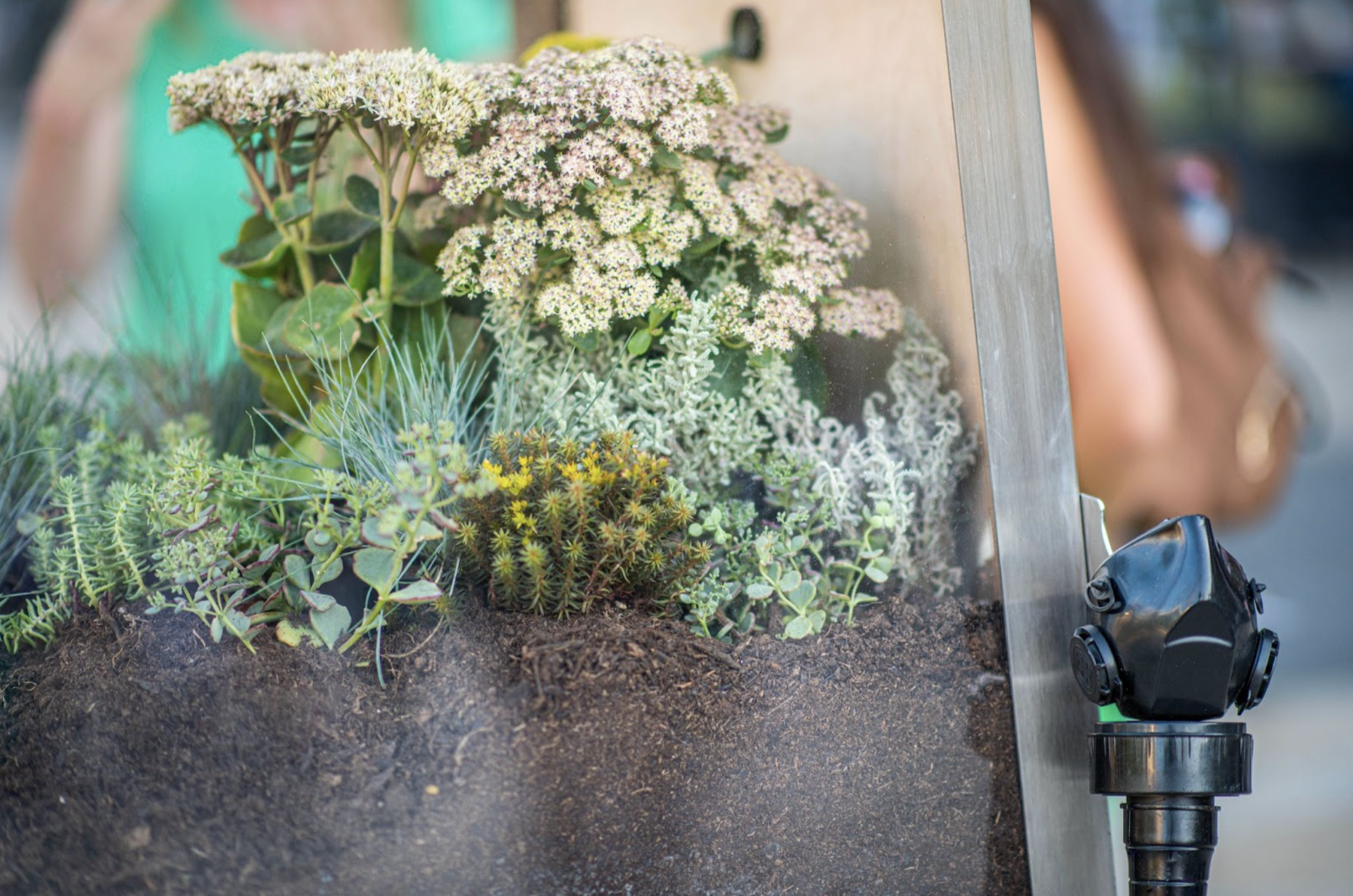
The city unfolds itself to us through our senses. We explore our environment, its rhythm, atmosphere, texture, as well as its current condition, the impact of our individual and social practices through sight, sound, smell, touch, and taste.
What can we learn about our city by activating our senses?
This is a question that has been fascinating me both as an artist and as the initiator and curator of SENSING THE CITY, an event series at PLACCC Festival, which hosts small-scale public interventions and related thematic discussions that help the audience explore and (re)connect to the urban ecosystem.
The aim of SENSING THE CITY is to raise fundamental questions about the state of our cities - or lands, skies and waters in a broader sense. I believe art, engagement, emotional identification and energy as a driving force, as well as multisensory approaches can open up completely different qualities of experience in the process of embracing controversial topics. As such, the term “sensing” has a double meaning, as it refers to both the physical perception of the city (the reaction of the body) and the active sensitization of urban locations with the presence of the body.
2021
In the first year of the program, four projects of local Hungarian artists and collectives were chosen via our Open Call, welcoming diverse artistic mediums and genres.
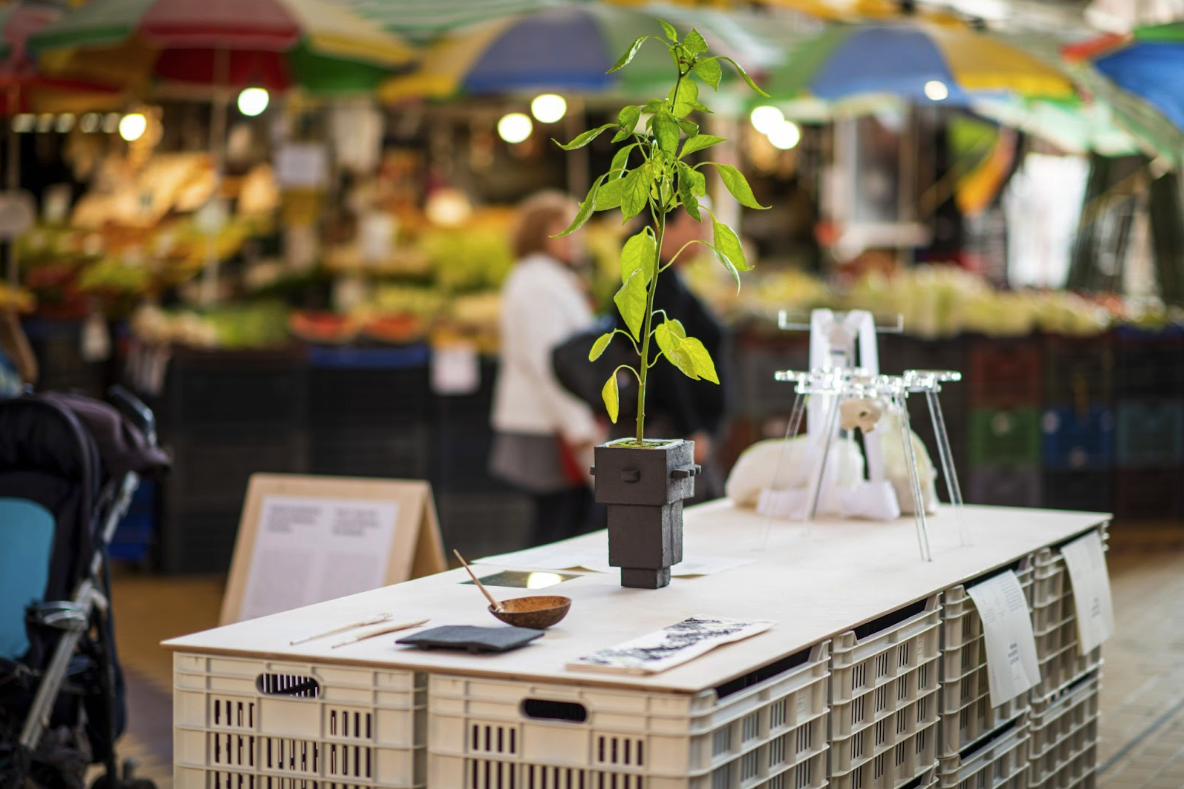 Fuzzy Earth: Not Quite California Wonder (2021)Photo: Attila Balogh / PLACCC |  Fuzzy Earth: Not Quite California Wonder(2021)Photo: Attila Balogh / PLACCC | ||
| Not Quite California Wonder by Fuzzy Earth collective focused on Capsicum annuum (bell pepper) and greenhouse environments, challenging the era of industrial agriculture, where most vegetables are produced in distant lands, physically and ideologically disconnected from the consumer society. While all year-long operating automated greenhouses are taking over the shelves of supermarkets, the stalls of traditional market halls are slumbering. Fuzzy Earth believes in the transforming power of future market halls. They foresee a democratically shared space between humans and agro-botanical species: an agora. For five days, a conventional market stall became a living experiment hosted by the California Wonder bell pepper. A speculative scenario unfolded for the visitors of the Rakoczi Market Hall, through the medium of film, storytelling, and artifacts. Bell pepper shared memories about its altering role as a plant, food, industry, symbol of political power and ecological catalyst. The market experience was joined by a talk about the “Possible alternatives to agricultural production and the producer-consumer relationship” between the artists and Orsolya Lazányi, ecological economist and co-founder of Cargonomia, moderated by Viktória Lay, radio program editor and reporter. | |||
Fireworks by Katalin Kortmann - Bálint Katona - András Kaprinyák attempted to make the huge amount of waste generated in Budapest visible by video installations, elements of sound, smoke and taste related to the capital’s incinerator, creating the potential for breaking with the status quo. During a collateral event of the show, sociologist-chef András Kaprinyák was presenting vegan bites made from kitchen by-products, followed by a discussion on waste management and circular economy. Discussion partners were Gábor Kanozsai, Head of Department for Circular Economy at Municipal Public Services Co. Ltd, and Sámson László, Director of Waste Management and Utilization, moderated by Viktória Lay, radio program editor and reporter. | 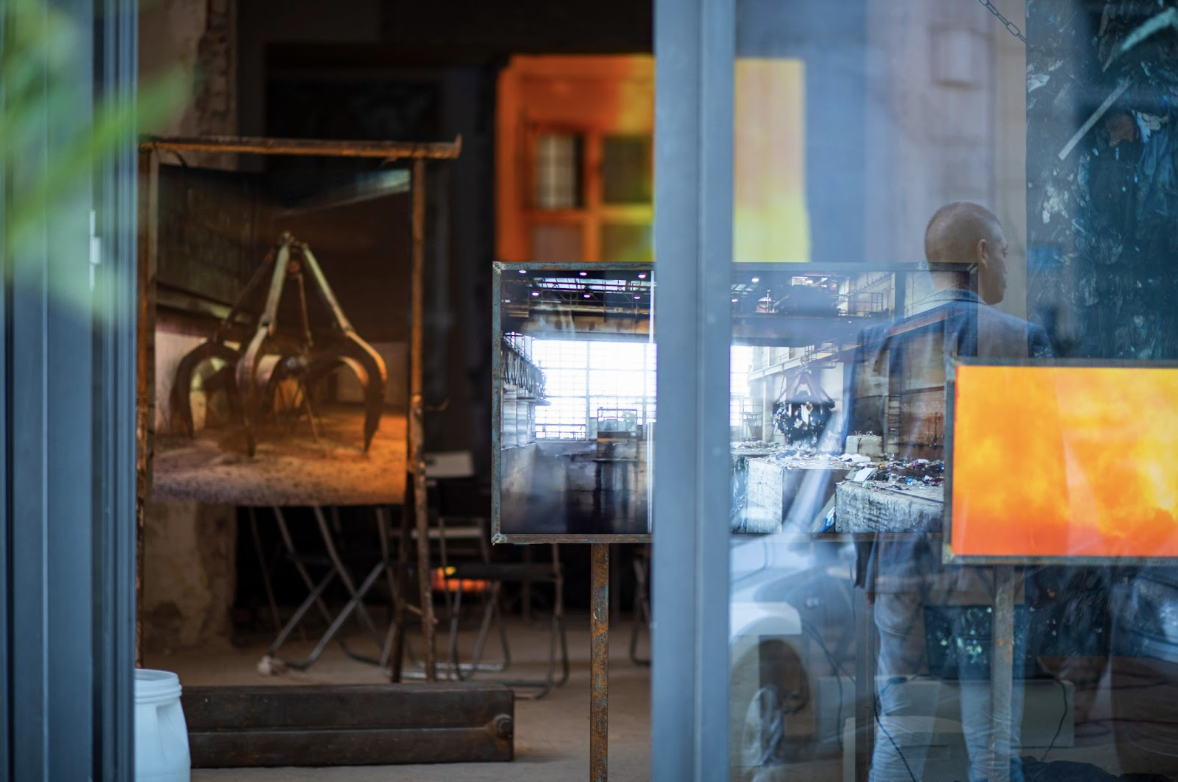 Katalin Kortmann-Járay – Bálint Katona – András Kaprinyák: Fireworks (2021)Photo: Attila Balogh / PLACCC | ||
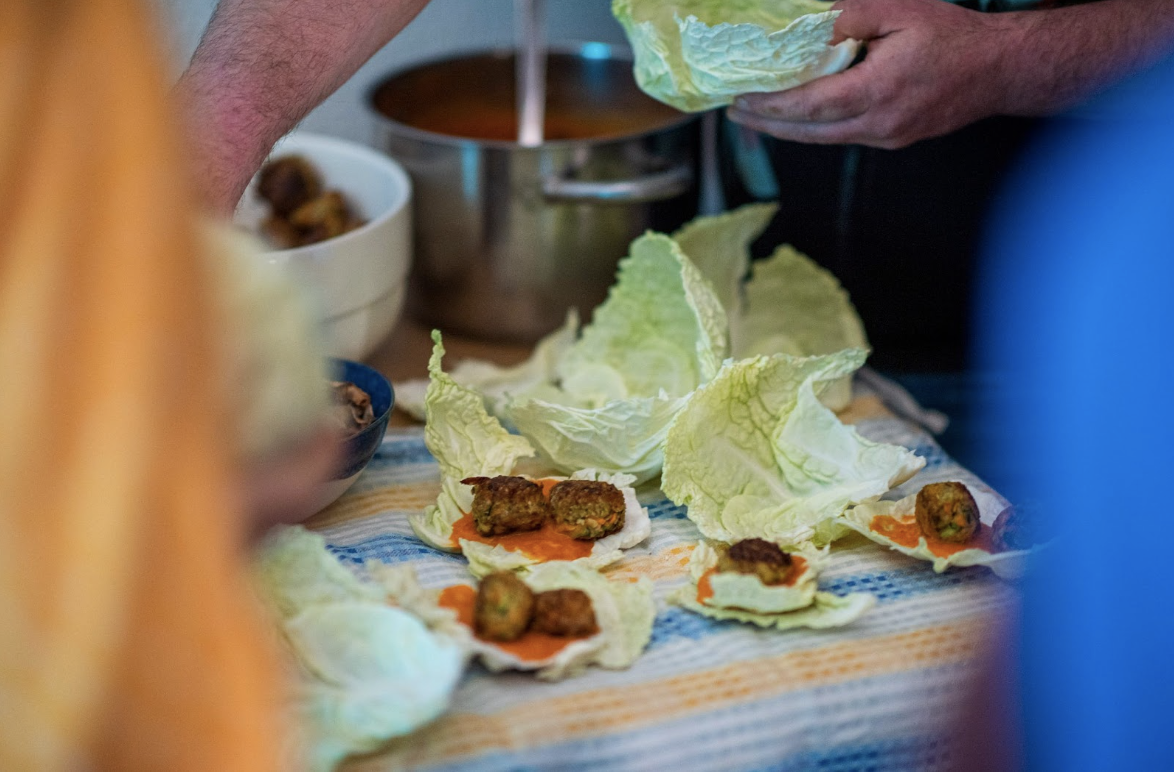 Katalin Kortmann-Járay – Bálint Katona – András Kaprinyák: Fireworks (2021)Photo: Attila Balogh / PLACCC |
| ||
No Endpoint, the twelve-hour vigil performance of SVUNG Research Group took place at an abandoned cemetery, from sunset to sunrise. The various performative, somatic, attuning exercises provided a space to explore the collective and personal aspects of death, decay and rebirth. The vigil was a unique bodily experience of our alleged or real concerns and preconceptions, fears, losses, and new beginnings. The performative vigil was finished by a discussion on ecopsychology and climate anxiety together with Zselyke Molnos, biologist and ecopsychologist, moderated by Marietta Mogyorósy, nature relations facilitator. | |||
 SVUNG: No Endpoint (2021)Photo: SVUNG | 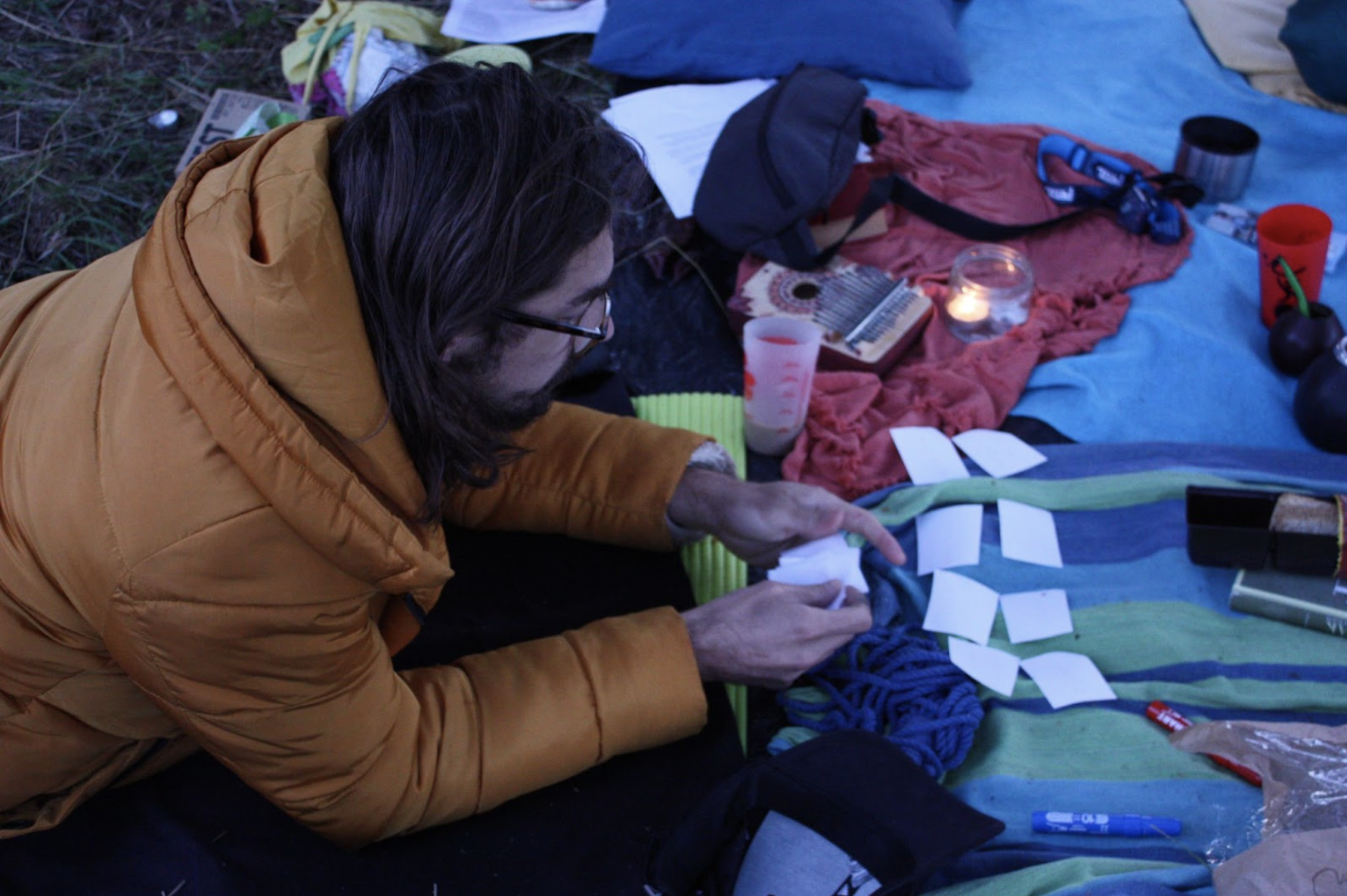 SVUNG: No Endpoint (2021)Photo: SVUNG |  SVUNG: No Endpoint (2021)Photo: SVUNG | |
MOME's Tolna Sound Garden project revealed the sounding nature of our city, hidden in everyday life. Tolna Garden is a pocket park in the Market Hall district of Budapest. The local municipality, paired with an NGO called Rév8, wanted to create a community-maintained garden open to everyone, and initiated several small interventions to involve local residents in this process, so that residents can identify with and take care of the place itself. As part of the program of SENSING THE CITY, a group of MOME students and researchers broadened the acoustic horizon of the garden with a sound microscope, sound sculptures, and an immersive soundwalk. At the end of the five-hour program a discussion took place on the role of long-term artistic experimentation and creative practices in community building with the participation of the artists and Flóra Madácsi, Rév8 project manager, moderated by Ildikó Fazekas, design culture manager. Consistent long-term presence is essential when working with communities, human or non-human. The MOME team has had several workshops and podcast recordings in the following years as well, and Tolna Garden is still open for the local community, managed by Rév8. |  MOME: Tolna Sound Garden (2021)Photo: Attila Balogh / PLACCC | ||
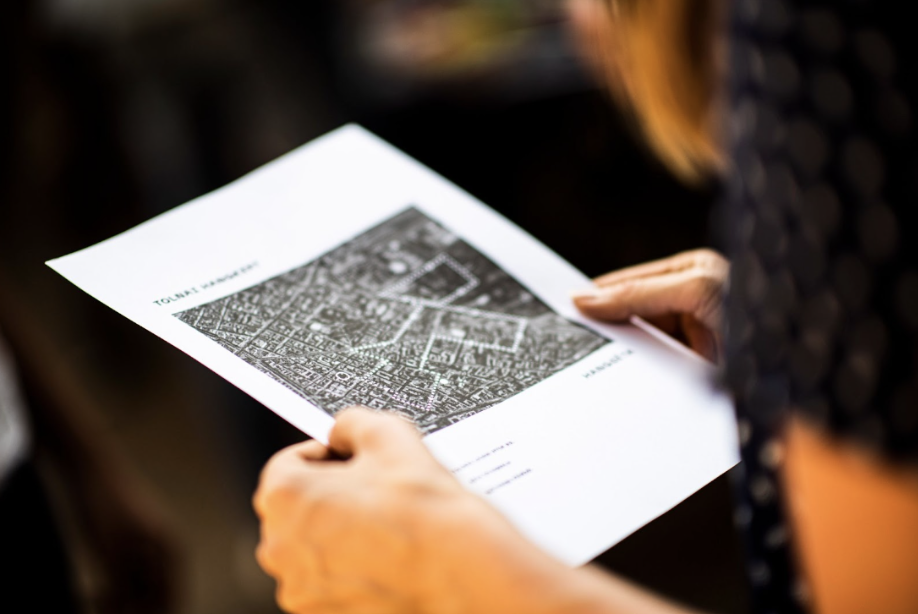 MOME: Tolna Sound Garden (2021)Photo: Attila Balogh / PLACCC |  MOME: Tolna Sound Garden (2021)Photo: Attila Balogh / PLACCC | ||
2022
The second edition of SENSING THE CITY invited some artists of the In Situ network dealing with environmental and ecological issues for a week-long research residency in Budapest. Nana-Francisca Schottländer, Leonardo Delogu and myself, together with Fanni Nánay, the artistic director of PLACCC Festival, visited sites in and around the city related to our research interests. We learnt about wastewater treatment and the state of our freshwaters - more specifically the Danube - in the North-Pest Wastewater Treatment Plant, traced the formations, creatures and history - or theirstory - of the Mátyás-hill quarry, and had daily sharing circles on Kláris Eco Boat. The public was also invited to experience the research process.
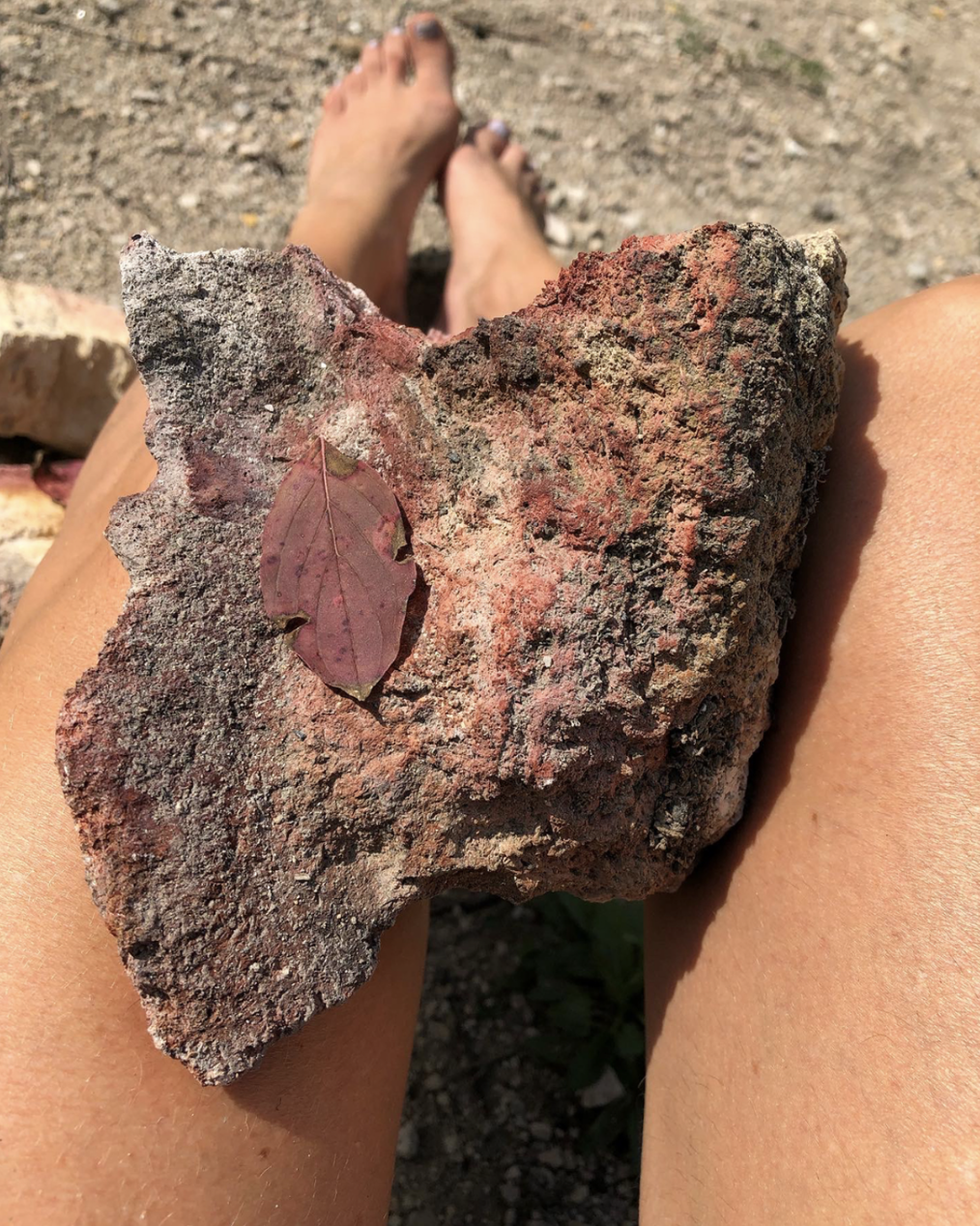 Nana-Francisca Schottländer: Going Visiting (2022)Photo courtesy of the Artist | 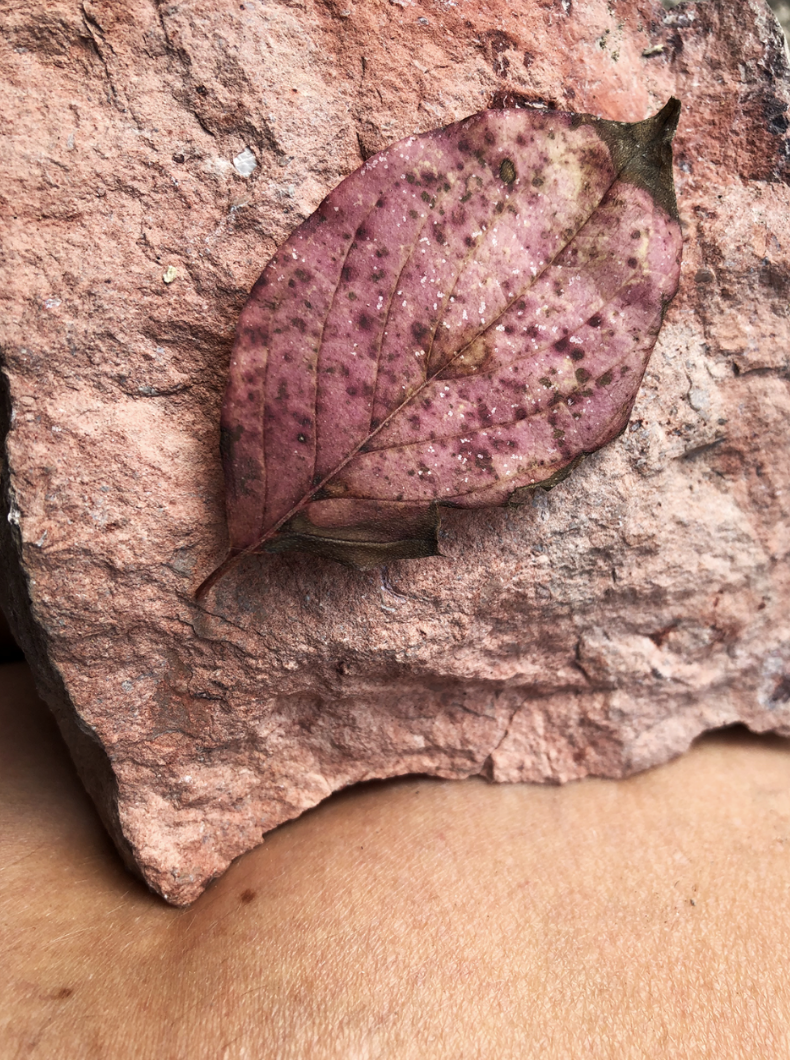 Nana-Francisca Schottländer: Going Visiting (2022)Photo courtesy of the Artist | Using her method Going visiting and the body as a living instrument of investigation, Nana-Francisca Schottländer and the participants of her workshop delved into the island of Népsziget in the Danube, a former industrial site which is now overgrown by forest and partially taken over by the wastewater treatment facility we visited. She was interested in exploring the various interrelations and confluences between the river-body and the human bodies and stories of the city - the wastewater and its treatment before returning the fluids to the river, the thermal water flowing into the Danube and the social aspects of its use, concepts and practices of protecting the riverbank, or whether it needs that kind of protection at all. |
Leonardo Delogu continued his artistic research on the pit phenomenon at the Mátyás-hill quarry, closing the research week by a picnic in the pit with the public in order to spend time together, share some body practice and try to think, and dream together. He says, a picnic is an interruption, from the work time or from walking for instance, it is a space for relaxation, encounters, where good ideas may be born in the field of collective contemplation.
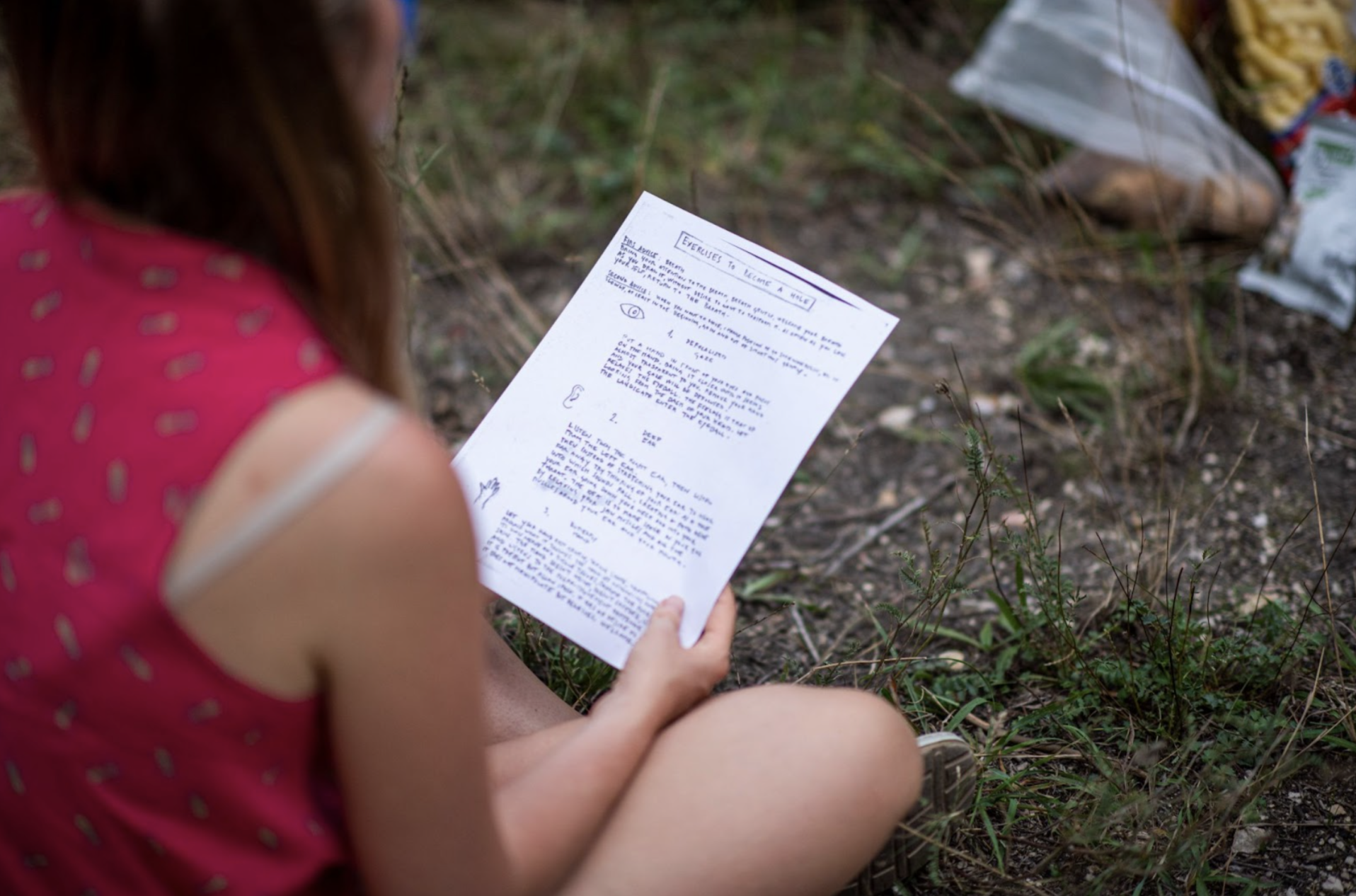 Leonardo Delogu: Pic-nic in the Pit (2022)Photo: Attila Balogh / PLACCC | 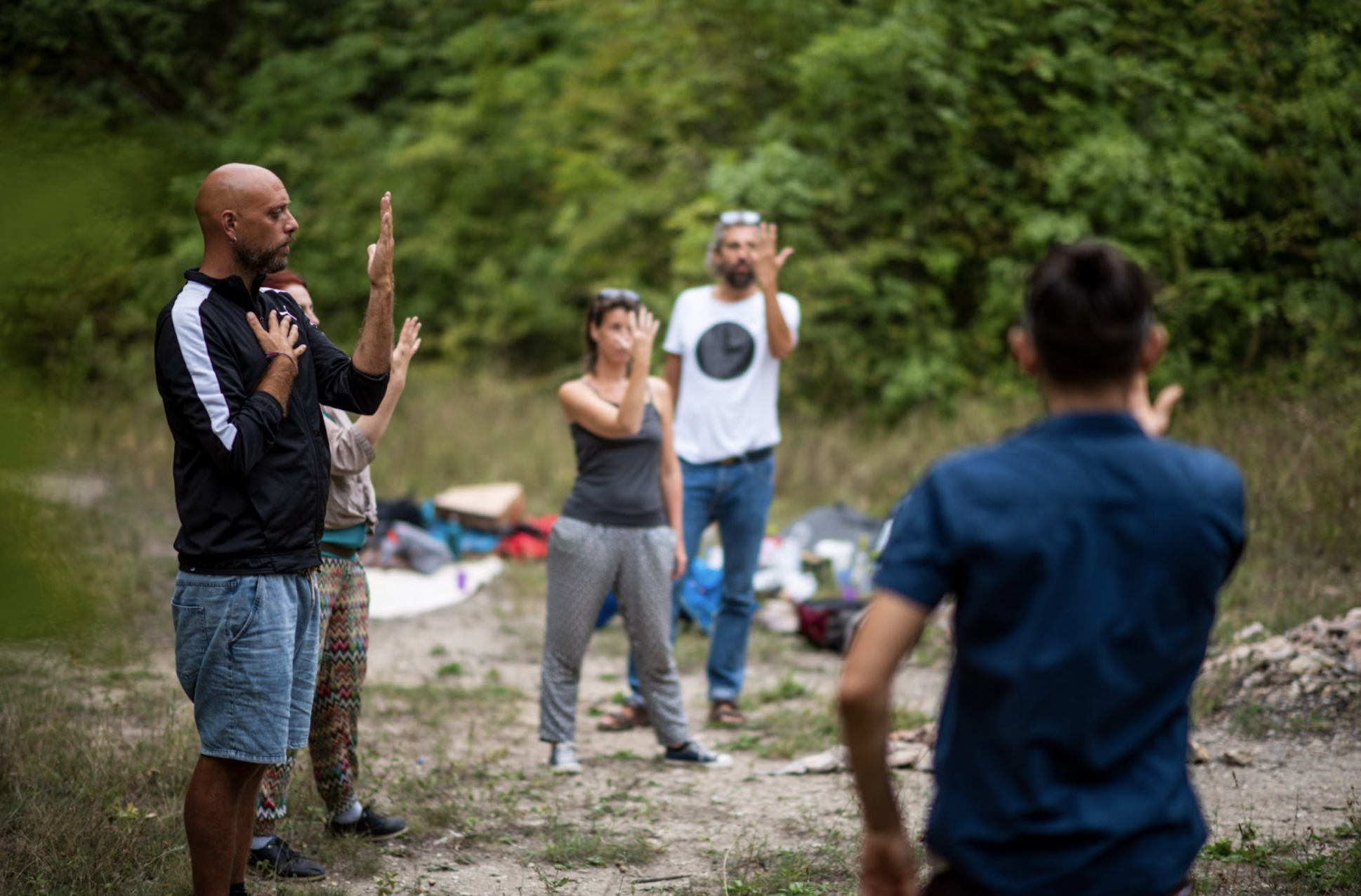 Leonardo Delogu: Pic-nic in the Pit (2022)Photo: Attila Balogh / PLACCC |
My own research was focusing on urban air quality related to my upcoming installation Designated Breathing Zone. During the research week I aimed to map the city for possible locations and also to learn more about air pollution levels within the city. As a method of exploration, in collaboration with Judit Szegő (Clean Action Group) we facilitated a smellwalk starting from a busy road in Budapest ending in the Gellért Hills, to activate our olfactory senses and perception, and at the same time measure pollution levels. I was interested in the smells and scents that shape the city, the stories they unfold, and the environmental or social factors, activities that determine it. We could organically experience how the presence of green areas affect the scent profile of the city, the air pollution levels and breathing quality, then discussed our encounters and the art & science aspects in an informal talk moderated by design- and art theorist Anett Mogyorósy. | |
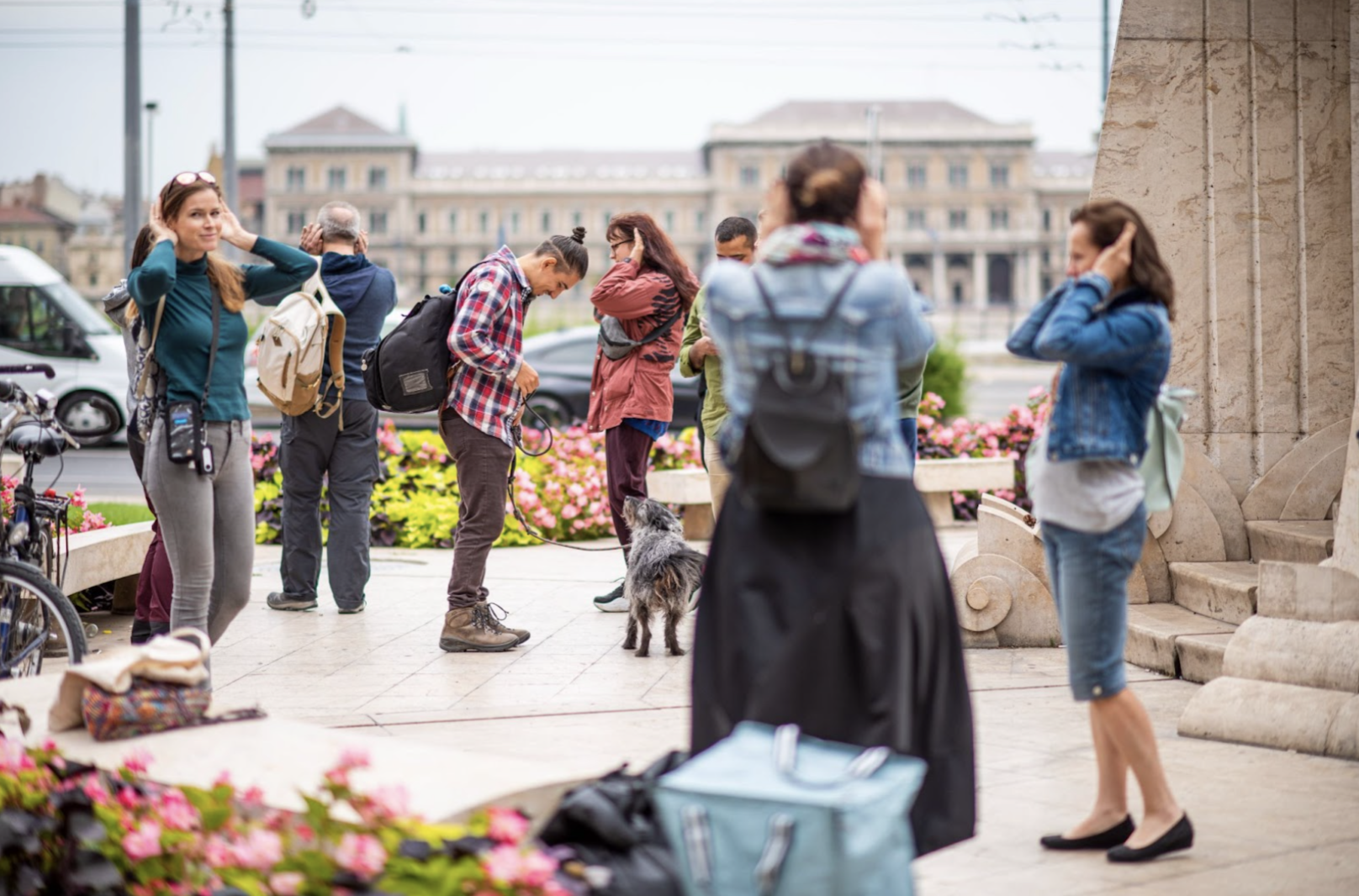 Eva Bubla: Aroma Mapping (2022)Photo: Attila Balogh / PLACCC | 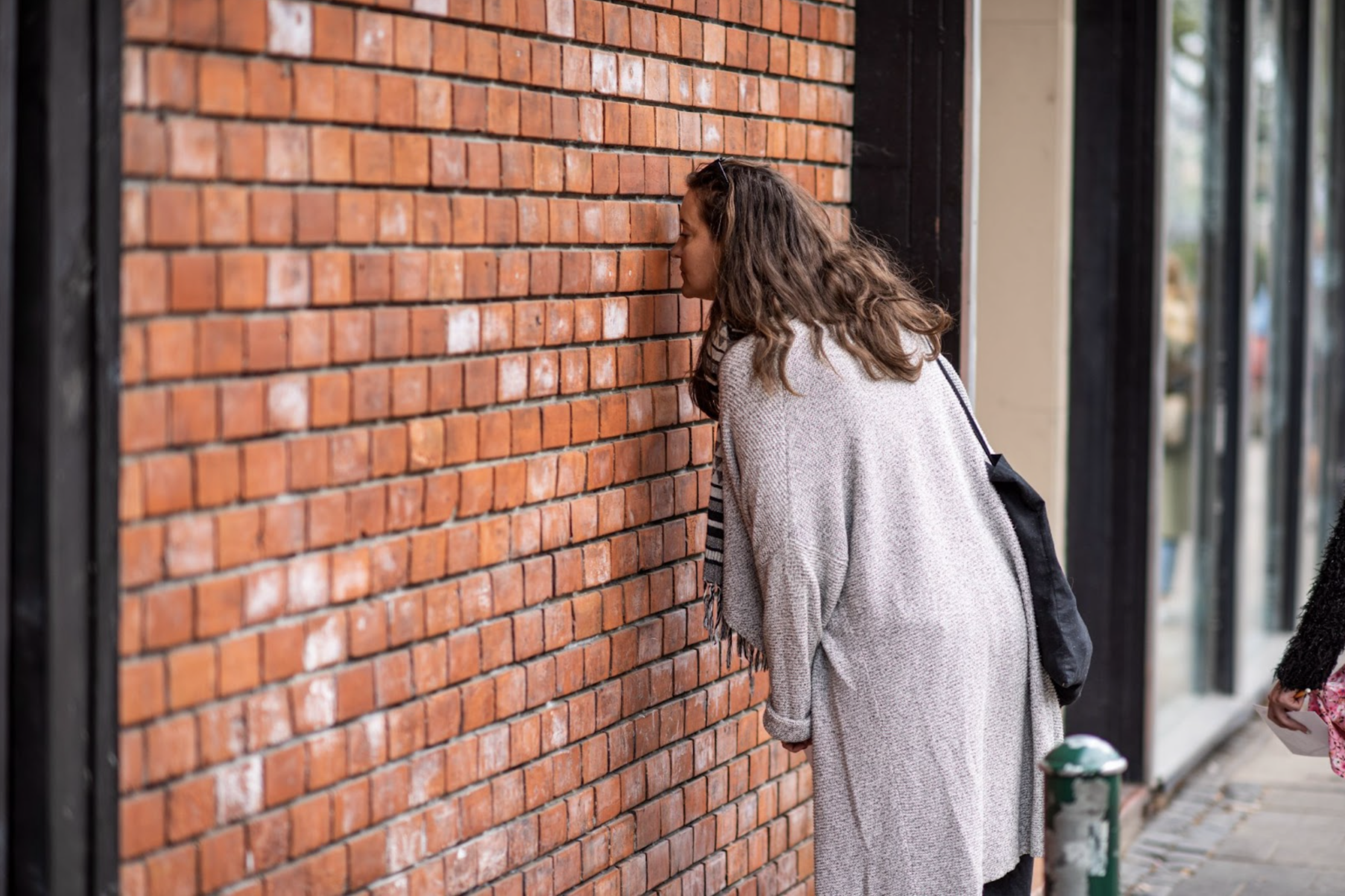 Eva Bubla: Aroma Mapping (2022)Photo: Attila Balogh / PLACCC |
Seth Honnor also joined our program; in a talk with Kata Győri (Energiaklub) they explored the various aspects of the global energy crisis that we live in - the impact of a climate breakdown, the ongoing war, questions of ownership, and the relationship of energy and economy.
The experiences and findings of the research week are meant to be incorporated in projects of the participating artists in the coming years.
2023
Independent cultural institutions in Hungary witnessed a severe cut in funds, which affected the program of SENSING THE CITY as well in 2023. The third season presented only one project, my installation Designated Breathing Zone. Designated Breathing Zone is a space reflecting on acute urban environmental problems. The spread of urbanization is a global phenomenon, with the loss of green spaces, road traffic and industrial activities all contributing to the deteriorating air quality of our urban spaces. Air pollution is also an acute problem in Hungary, causing the premature deaths of 13.000 people a year at national level, according to Clean Air Action Group publications, not to mention other health and environmental impacts. Recent summers have also been a suffocating illustration of the so-called heat island effect in the city, where not only the vegetation is thirsty but we ourselves as well for some greenery. The installation, which incubates local plants, serves as a space for dialogue, drawing attention to the importance and beneficial effects of green spaces, allowing them to be experienced artistically, physically and sensorially. | |
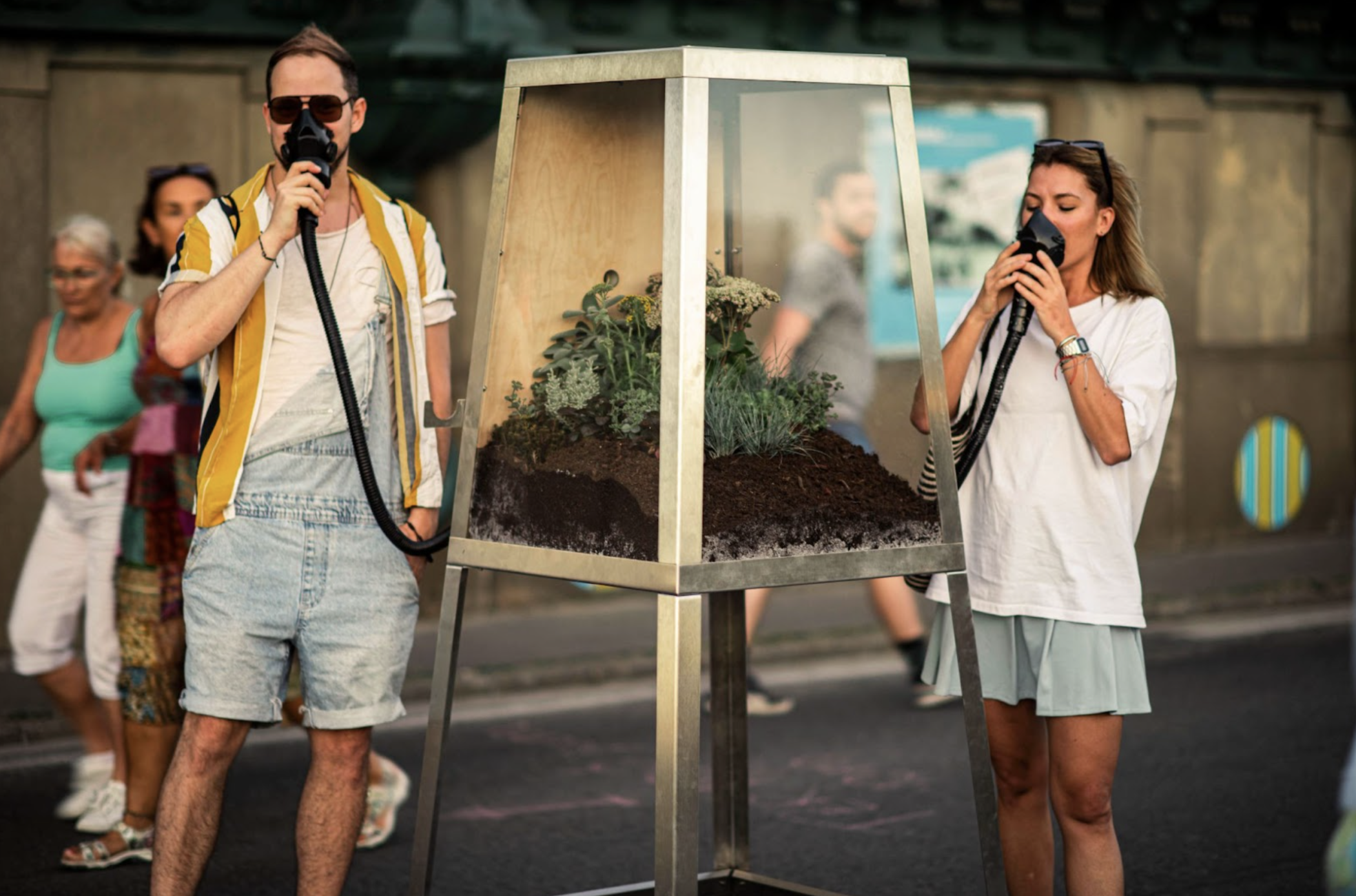 Eva Bubla: Designated Breathing Zone (2023)Photo: Attila Balogh / PLACCC |  Eva Bubla: Designated Breathing Zone (2023)Photo: Attila Balogh / PLACCC |
Some people were curious to explore and tried to sense the difference between the air outdoors and indoors, also sharing their experience in or outside the city. Others were more focused on scents. There were requests to have Designated Breathing Zones in all parts of the city with heavy traffic, while some were expressing their concerns about humanity being already late to take action. A provoker also stopped by. There were more poetic interpretations as well, such as the soul's return to the soil, or a spot for vegetal meditation. One of the most meaningful elements and also one purpose of the project is to have these conversations; to initiate a dialogue, make people stop, sense, think, and share.
So, what could we learn about our city by activating our senses?
We heard the pioneer bell pepper sharing future memories about its changing role as a plant and the need for new types of market spaces and human-botanical relationships. We sneaked into hidden terrains of waste management facilities to be able to rethink our own household practices. We let the cycle of death-decay-regeneration flow through our bodies to plant seeds of new beginnings. We widened our auditory horizon to grow human and plant communities. We dwelled with rivers and rocks, mountains and pits, and “energized” our thoughts. We inhaled plant-filtered air from incubated futures, futures that could be, should be altered by our present selves.
All these experiences may serve as ways of sensing and making sense of the various lifeforms and narratives of the city, to understand the multiple processes that we live in, and the multiple species that we share our worlds with.
SENSING THE CITY will continue with its fourth edition in the 2024 season of PLACCC Festival, returning with an Open Call in the spring to welcome Hungarian artists or artist collectives to make further sense of the city.
***
Eva Bubla is an artist, activist, educator, and independent curator. Her work articulates current ecological and social concerns and are strongly connected to the specific environment. At the boundaries of art & science, her artistic and curatorial projects aim to map, perceive, interpret, and as such (re)connect audiences to the local ecosystem.
More info:

